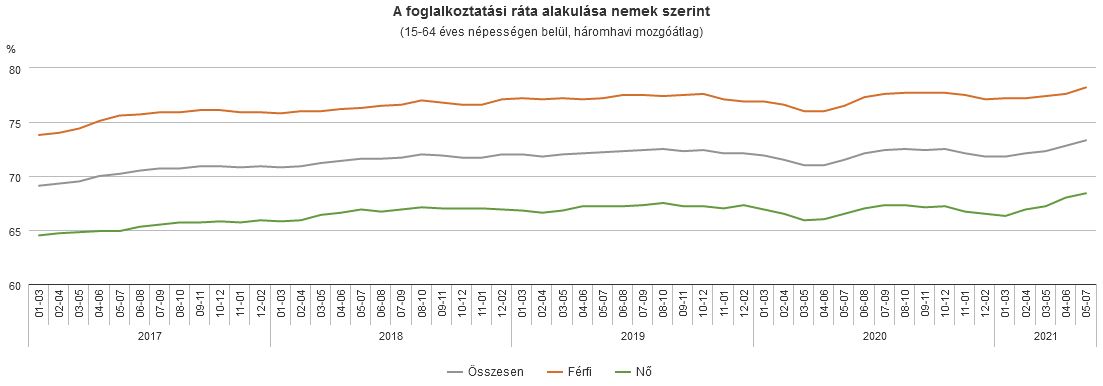Employment in Hungary hits a historic high – wages are expected to rise
EnglishThe unemployment rate in Hungary fell below 4 percent in July. By comparison, unemployment in the euro area is almost twice as high. Employment reached a historic high, with more than 4.7 million people working in Hungary. The demand for labour is gradually increasing, which predicts a dynamic increase in average wages. The Hungarian National Bank (MNB) forecasts an annual increase of 7.5 percent in average salaries for this year, next year and in 2023.
The number of unemployed fell to 189,000, while the unemployment rate dropped to 3.9 percent in July 2021. By comparison, the unemployment rate in the euro area is nearly twice as high.
According to the forecast of MNB, the unemployment rate will fall to 3.5 percent next year.
For a more comprehensive picture, it is also worth looking at the data from the National Employment Service. These show that the number of registered jobseekers has fallen by 28.4 percent to 262,000 in one year.
Employment
Owing to the coordinated economic protection measures taken by the government and the central bank, the labour market was resilient and recovered quickly after the coronavirus crisis. This is also reflected in the fact that the number of people in employment was nearly 4.7 million in June and the employment rate for the 15-64 age group rose to nearly 73 percent.
The situation further improved in July. The number of people employed rose slightly above 4.7 million, and the employment rate grew to a historic high of 73.3 percent.
Employment rate by sex (population aged 15-64, three months moving average)

Source: MNB
Labour shortage
Another favourable fact is that, in addition to the increase in employment, the number of hours worked has also been rising dynamically. Due to the rapid economic restart, businesses may be facing labour shortages again in several sectors in the second half of this year already.
In the third quarter, a dynamic growth was seen in the service sector as well, as it was pointed out by Barnabás Virág, Deputy Governor of MNB at a press conference following the central bank's interest rate decision meeting.
Wages
As a result, there is a growing demand for workers, which will lead to a dynamic increase in wages. Higher wages for health workers and teachers and the higher minimum wage and guaranteed wage minimum have all contributed to the general increase in wages so far.
As for the future, wages could rise by an average of 7.5 percent annually this year, next year and in 2023, according to the forecast published by MNB in June, which projects an approximately 25 percent increase in the average salary in Hungary in the next 3 years.
This year, salaries are expected to rise most dynamically in the construction, hospitality and IT sectors.
